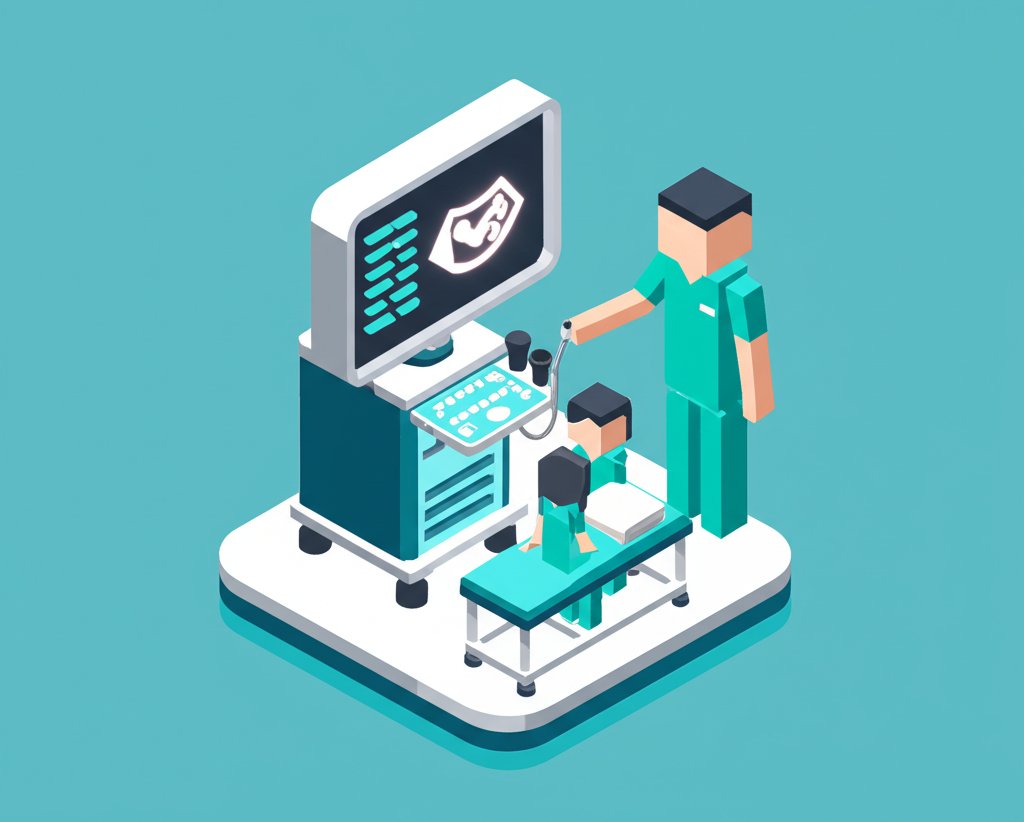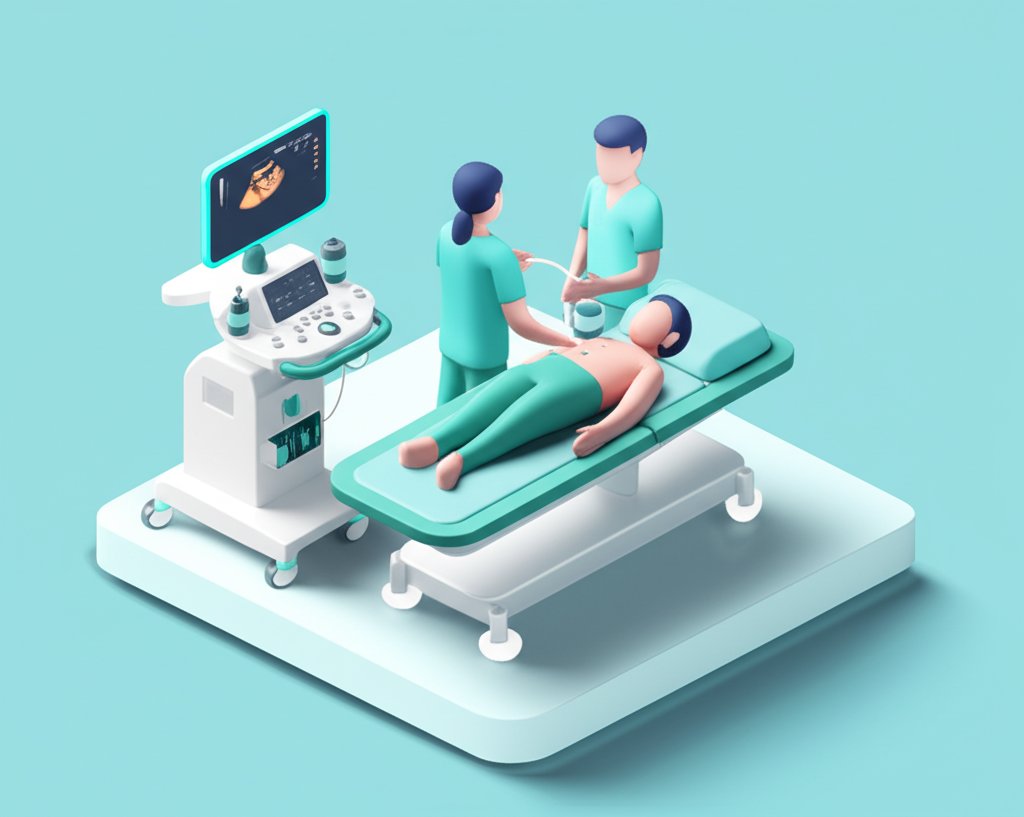Have you ever wondered about the skilled professionals behind those crucial internal images doctors rely on? When your physician needs to peek inside your body without surgery, they often turn to the wonders of ultrasound technology. This is where the dedicated ultrasound tech steps in. Also known by various titles like ultrasound technician or ultrasound technologist, these healthcare heroes are indispensable in the field of diagnostic imaging. Their daily work goes far beyond simply operating a machine; they are patient advocates, technical experts, and critical members of the medical team. This comprehensive guide will unravel everything about what do ultrasound techs do, exploring their multifaceted responsibilities, diverse specializations, demanding work environment, and the rewarding path to becoming one. Prepare to discover the vital contributions these professionals make to modern healthcare.
The Core Responsibilities of an Ultrasound Technologist

At the heart of their profession, ultrasound technologists perform a wide array of duties that ensure accurate and safe diagnostic imaging. From initial patient interaction to the intricate process of capturing and evaluating images, their role is both technically demanding and deeply compassionate.
Patient Preparation and Communication
One of the most critical aspects of an ultrasound technologist’s job involves direct patient interaction. Many patients arrive for an ultrasound feeling anxious or uncertain about the procedure. The ultrasound tech serves as a frontline communicator, explaining the process clearly and patiently, answering questions, and helping alleviate fears. They will gather essential patient history, verify prior exams, and ensure the patient is positioned comfortably and safely for the scan. This crucial step not only fosters trust but also ensures patient cooperation, which is vital for obtaining high-quality images. Their ability to empathize and reassure is as important as their technical expertise.
Operating Advanced Ultrasound Equipment
The primary function of an ultrasound technician is the skillful operation of sophisticated ultrasound machines. These devices utilize high-frequency sound waves, rather than radiation, to create real-time images of internal organs, blood vessels, and soft tissues. The ultrasound tech expertly manipulates a handheld device called a transducer over the patient’s skin, often with the aid of a special gel to enhance sound wave transmission. They adjust settings like gain, depth, and focus to optimize image clarity, searching for specific anatomical structures or potential abnormalities. This requires an in-depth understanding of physics, anatomy, and pathology to navigate the body’s complex internal landscape.
Image Acquisition and Quality Assurance
Capturing the right images is a precise art and science. An ultrasound technologist must have a keen eye for detail and comprehensive anatomical knowledge to differentiate normal tissue from areas of concern. They systematically scan the target area, acquiring multiple images and video clips from various angles. During this process, they continuously monitor the image quality, ensuring that the resolution, brightness, and contrast are optimal. If an image is not clear or complete, they will rescan until satisfactory results are achieved. This commitment to quality assurance directly impacts the accuracy of the physician’s diagnosis.
Documenting Findings and Collaborating with the Healthcare Team
Once the images are acquired, the ultrasound tech compiles a preliminary report. This involves carefully reviewing the captured images, taking precise measurements, and noting any observations, such as the size, shape, and location of any unusual findings. While they do not make a medical diagnosis, their detailed report provides critical information that helps the interpreting physician arrive at an accurate diagnosis. They then communicate these findings effectively to the healthcare team, including radiologists and referring physicians, ensuring a seamless flow of information for patient care and treatment planning. This collaborative approach underscores their integral role in the diagnostic process.
Equipment Maintenance and Room Sterilization
Beyond patient care and image capture, ultrasound techs are also responsible for the operational readiness of their workspace. This includes performing regular maintenance checks on ultrasound machines to ensure they are functioning optimally. They troubleshoot minor issues and report more complex malfunctions to biomedical engineering. Crucially, they maintain a sterile and hygienic environment, meticulously cleaning and sterilizing transducers and examination rooms between each patient. Adhering to strict infection control protocols is paramount to patient safety and the overall quality of the diagnostic imaging department.
Diverse Specializations for Ultrasound Technicians
The field of sonography is vast, offering numerous specialization paths for ultrasound technicians. These roles require specific training and expertise, allowing technologists to focus on particular body systems or patient populations. This diversity highlights the broad application of ultrasound in modern medicine.
General Sonography: A Broad Scope
General sonographers specialize in imaging a wide range of internal organs. This foundational specialization often forms the basis of an ultrasound technologist’s training. They routinely perform scans of the abdomen, including organs like the liver, kidneys, pancreas, and spleen, to detect conditions such as gallstones, tumors, or fluid collections. They may also image the thyroid gland, breasts, and male reproductive organs, providing crucial insights into various health issues. This broad expertise makes them versatile assets in any diagnostic imaging department.
Obstetric and Gynecologic Sonography
Perhaps the most widely recognized application, obstetric and gynecologic sonographers play a profound role in women’s health. They perform scans of the female reproductive system, monitoring the health of the uterus and ovaries. During pregnancy, these ultrasound technologists track fetal development, confirm due dates, check for multiple pregnancies, assess fetal growth and position, and screen for potential abnormalities. Their work provides expectant parents with important information and reassurance, making them a comforting presence during a significant life stage.
Cardiovascular Sonography (Cardiac and Vascular)
Cardiovascular sonographers, also known as echocardiographers or vascular technologists, specialize in the heart and blood vessels.
Specialized Areas: Breast, Pediatric, and Neurosonography
Beyond these major categories, ultrasound technicians can pursue even more specialized sub-fields:
Each specialization requires distinct training and a refined skill set, underscoring the deep expertise required of an ultrasound technologist.
The Work Environment of an Ultrasound Tech
The daily reality of what do ultrasound techs do is shaped by their work environment, which can vary across healthcare settings. Understanding these factors provides a more complete picture of this career path.
Typical Settings and Team Collaboration
The majority of ultrasound technicians work in hospitals, forming an integral part of the larger medical team. However, many also find fulfilling careers in physician offices, specialized diagnostic imaging centers, and outpatient clinics. In these settings, they collaborate closely with a diverse group of healthcare professionals, including radiologists who interpret the images, referring physicians who order the scans, nurses who assist with patient care, and other technologists. This teamwork is essential for comprehensive patient management.
Physical Demands and Scheduling
While mentally stimulating, the role of an ultrasound tech also presents physical demands. Technologists often spend long periods standing, maneuvering heavy equipment, and assisting patients into various positions. They may work in dimly lit rooms to optimize image viewing on their monitors. Due to the critical nature of diagnostic imaging, many ultrasound technicians may work beyond standard business hours, including evenings, weekends, and on-call shifts, particularly in hospital settings. Ergonomics and proper body mechanics are crucial to prevent strain and injury in this physically active role.
The Role of Technology and Innovation
The field of diagnostic imaging is constantly evolving, with continuous advancements in ultrasound technology. Modern ultrasound machines are becoming more compact, user-friendly, and integrated with Artificial Intelligence (AI) to enhance image quality and diagnostic accuracy. Ultrasound technologists must commit to lifelong learning, regularly attending training programs and workshops to stay current with the latest equipment, techniques, and research. This adaptability ensures they remain at the forefront of medical innovation, benefiting patient care with cutting-edge diagnostic imaging capabilities.
Becoming an Ultrasound Professional: Education and Certification
For those inspired by what do ultrasound techs do, understanding the educational and certification pathways is the first step toward a rewarding career as an ultrasound technologist. This profession demands a robust foundation of knowledge and demonstrated competency.
Essential Educational Pathways
To embark on a career as an ultrasound technician, aspiring professionals must complete an accredited educational program. The most common pathways include:
Crucially, prospective students should ensure their chosen program is accredited by the Commission on Accreditation of Allied Health Education Programs (CAAHEP). Accreditation is vital for eligibility to sit for national certification exams.
Crucial Certifications: The ARDMS Standard
After completing an accredited program, the next essential step for an ultrasound technologist is to obtain professional certification. The most widely recognized and respected credentialing body in the United States is the American Registry for Diagnostic Medical Sonography (ARDMS). Earning ARDMS certification, such as Registered Diagnostic Medical Sonographer (RDMS), Registered Diagnostic Cardiac Sonographer (RDCS), or Registered Vascular Technologist (RVT), demonstrates a technologist’s expertise and commitment to high standards of practice. Many employers require ARDMS certification, and it opens doors to broader career opportunities and specializations. Continuing education units (CEUs) are required to maintain certification, ensuring that ultrasound techs remain up-to-date with industry advancements.
Developing Essential Skills and Attributes
Beyond formal education and certification, successful ultrasound technicians possess a unique blend of personal and professional attributes:
These skills, combined with rigorous training, prepare an ultrasound technologist for a dynamic and impactful career in diagnostic imaging.
Impact and Career Outlook for Ultrasound Technologists
The role of an ultrasound tech is not just about taking pictures; it’s about providing vital information that directly impacts patient health outcomes. Their contributions are fundamental to effective healthcare, and the career outlook for these professionals remains strong.
Making a Difference in Patient Care
Perhaps the most rewarding aspect of what do ultrasound techs do is the direct positive impact they have on patients’ lives. By accurately performing scans, they provide physicians with the insights needed to diagnose conditions ranging from pregnancies to life-threatening diseases like cancer or heart conditions. Their compassionate care can alleviate patient anxiety, and their technical skill ensures that diagnoses are timely and precise. They are the “eyes” inside the body, offering a non-invasive way to understand and address health issues, contributing significantly to improved patient care and quality of life.
Growth Opportunities and Demand
The demand for qualified ultrasound technicians is projected to grow significantly in the coming years. This growth is driven by several factors, including an aging population, the increasing preference for non-invasive diagnostic procedures, and continuous advancements in ultrasound technology that expand its applications. This strong job market offers numerous opportunities for career growth, specialization, and leadership roles within diagnostic imaging departments. With experience, an ultrasound technologist can advance to supervisory positions, become an educator, or specialize further in niche areas of sonography. The average salary for ultrasound technicians, reflecting their specialized skills and critical role, is competitive within the healthcare sector.
Understanding Their Diagnostic Role (and Limitations)
It’s crucial to reiterate that while ultrasound technologists are experts in image acquisition and preliminary evaluation, they do not make definitive medical diagnoses. Their role is to gather the highest quality diagnostic images and provide detailed observations to the interpreting physician, typically a radiologist or cardiologist. The physician then uses this information, combined with other clinical data and patient history, to render the official diagnosis and formulate a treatment plan. This clear division of responsibility ensures that patients receive the most accurate and comprehensive care possible, highlighting the collaborative and specialized nature of their role within the broader diagnostic imaging team.
Conclusion
The role of an ultrasound tech is far more comprehensive and vital than often perceived. From the careful preparation and compassionate care of patients, through the expert operation of advanced equipment, to the meticulous acquisition and documentation of images, ultrasound technicians are indispensable pillars of modern diagnostic imaging. They are the silent heroes who provide the crucial visual information that enables physicians to make accurate diagnoses and develop effective treatment plans. Whether known as an ultrasound technician, ultrasound technologist, or simply an ultrasound tech, their commitment to precision, patient welfare, and continuous learning makes them invaluable contributors to healthcare. Understanding what do ultrasound techs do reveals a challenging yet profoundly rewarding career dedicated to improving countless lives, one sound wave at a time. Their expertise is truly vital in navigating the complexities of human health.
FAQ

Q: What is the main difference between an ultrasound technician, technologist, and sonographer?
A: These terms are often used interchangeably to describe the same role. “Ultrasound technologist” or “Diagnostic Medical Sonographer” are generally preferred professional titles, emphasizing the advanced training and critical thinking involved. “Ultrasound technician” is a common colloquial term but may not fully convey the depth of their responsibilities. All refer to healthcare professionals trained to perform diagnostic imaging using ultrasound equipment.
Q: What types of conditions do ultrasound techs help diagnose?
A: Ultrasound techs assist in diagnosing a wide range of conditions across various body systems. This includes monitoring pregnancies, detecting gallstones, kidney stones, tumors, blood clots, heart conditions (like valve disorders), vascular diseases, breast abnormalities, and issues in abdominal organs. Their work is crucial for identifying many health concerns non-invasively.
Q: Do ultrasound techs give patients their diagnosis?
A: No, ultrasound technicians do not provide definitive medical diagnoses to patients. Their role is to acquire high-quality images and prepare a detailed preliminary report for the interpreting physician (usually a radiologist or cardiologist). The physician then reviews these images and your medical history to make the official diagnosis and discuss it with the patient.
Q: What education and certification are required to become an ultrasound technologist?
A: To become an ultrasound technologist, you typically need to complete an accredited Associate’s degree or Bachelor’s degree program in Diagnostic Medical Sonography. After graduation, national certification, primarily through the American Registry for Diagnostic Medical Sonography (ARDMS), is often required and highly desirable for employment.
Q: What is the work environment like for an ultrasound tech?
A: Ultrasound techs primarily work in hospitals, physician offices, and diagnostic imaging centers. The work involves significant standing, moving equipment, and assisting patients. It can also include working in dimly lit rooms. Many roles require flexibility with scheduling, including evenings, weekends, and on-call shifts, especially in hospital settings.
Q: Can an ultrasound tech specialize in different areas?
A: Yes, the field offers many specializations. Common areas include General Sonography (abdominal, small parts), Obstetric and Gynecologic Sonography, Cardiovascular Sonography (cardiac and vascular), and more specialized fields like Breast Sonography, Pediatric Sonography, and Neurosonography. Each specialization requires additional focused training and often specific certifications.
Q: Is ultrasound safe, and does it use radiation?
A: Ultrasound is considered a very safe diagnostic imaging modality because it uses high-frequency sound waves to create images, not ionizing radiation (like X-rays or CT scans). This makes it particularly suitable for sensitive applications like pregnancy monitoring.










